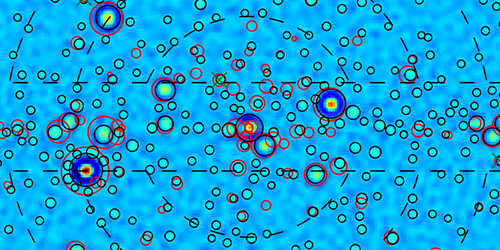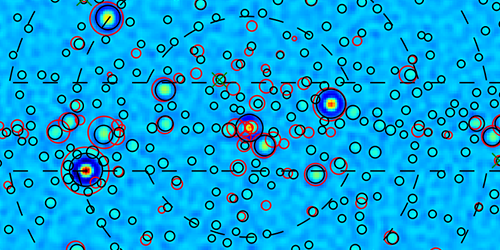Neutron Stars May Explain Gamma Ray Excess
Recent observations have revealed an excess of gamma rays near the center of our Galaxy. Intriguingly, this signal is consistent with the diffuse flux expected from the annihilation of dark matter particles. However, researchers have also hypothesized that these gamma rays may come from spinning neutron stars that emit beams of radiation (i.e., pulsars). Such emission could appear diffuse simply because it cannot be resolved by the limited spatial resolution of telescopes. Now, two independent teams have modeled the gamma-ray emission near the Galactic Center and shown that a population of point sources could fully explain the signal.
Benjamin Safdi at the Massachusetts Institute of Technology, Cambridge, and colleagues used data from the spaceborne Fermi Large Area Telescope (Fermi-LAT) to test if they were consistent with a population of faint, unresolved gamma-ray point sources. By modeling the combined emission of these sources, Safdi and his team showed that the gamma-ray excess could be explained by roughly 400 point sources that are likely pulsars. In a separate study, Christoph Weniger at the University of Amsterdam, Netherlands, and his collaborators showed that a population of dim point sources provided a better statistical fit to Fermi-LAT data than diffuse emission alone. The team also found that the sources had similar brightnesses to nearby millisecond pulsars. Weniger and his colleagues propose that new instruments with better spatial resolution and sensitivity at radio frequencies will be crucial for resolving these point sources and providing tighter constraints on possible contributions from annihilating dark matter particles.
This research is published in Physical Review Letters.
–Katherine Kornei





